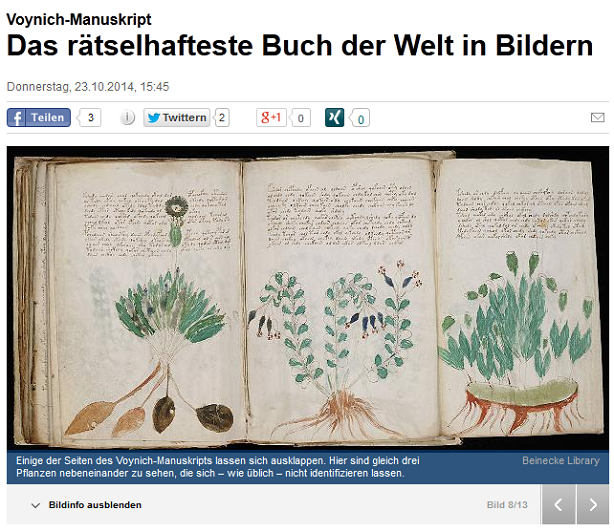Eine seltsame Schrift, irritierende Bilder, viele offene Fragen. In einer Bilderstrecke auf Focus Online stelle ich das Voynich-Manuskript vor.
Die seltsame Faszination, die das Voynich-Manuskript ausübt, kann man nur richtig einfangen, wenn man Fotos und Scans dieses Buchs auf sich wirken lässt. In einer Bilderstrecke, die nun auf Focus Online erschienen ist, habe ich 13 Blicke auf das Voynich-Manuskript zusammengestellt und jeweils mit einem Kommentar versehen.
Ich wünsche viel Spaß beim Lesen.
Follow @KlausSchmeh
Zum Weiterlesen: Voynich-Manuskript: Pornografische Darstellungen werden entschärft




Kommentare (11)